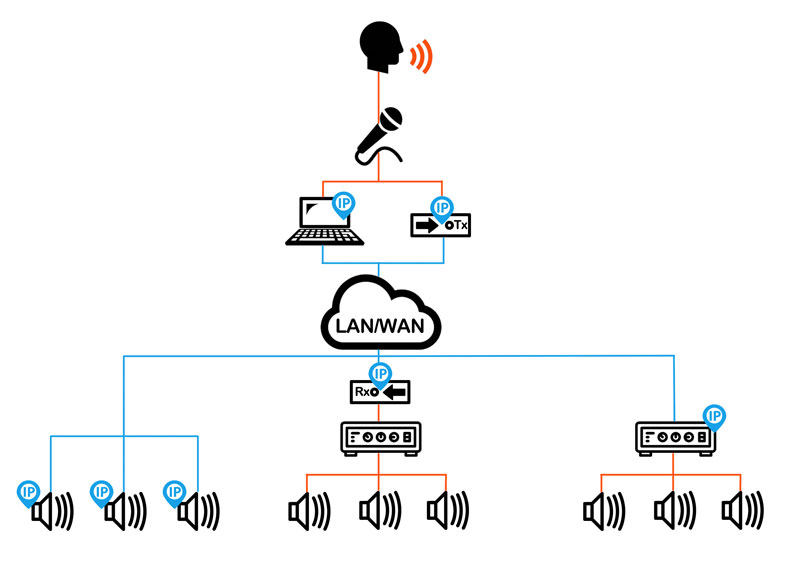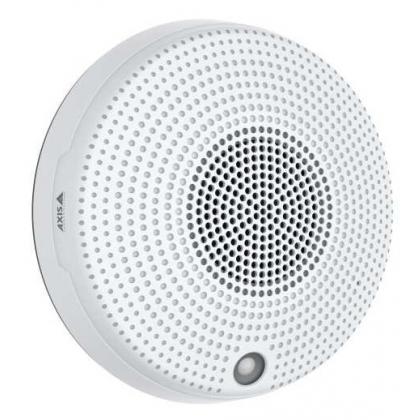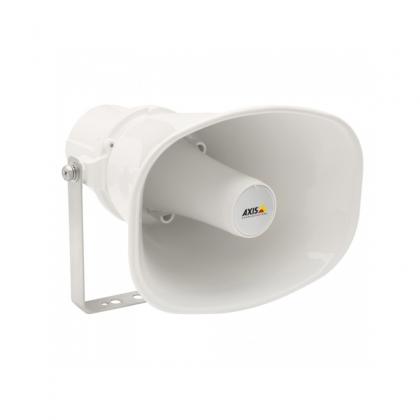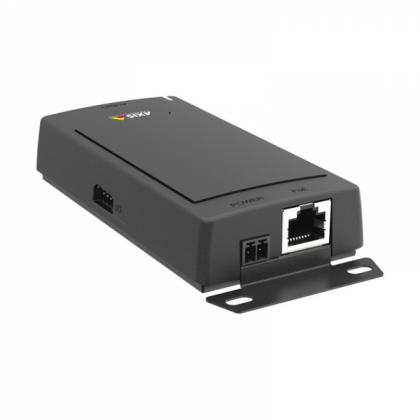What is Network Audio?
HowToAV talks to AVIXA Audio expert, Chuck Espinoza, for a deep-dive look at Network Audio (also known as Audio-over-IP or AoIP) and how it is becoming the new standard for professional audio and distributed sound.
As we progress further into the integrated world of AVIT, network audio is becoming more and more prevalent and developing as the new standard for professional audio and distributed sound. But what is network audio and how does it work? HowtoAV talks to AVIXA audio expert Chcuk Espinoza for all the answers...
What is network audio?
Network audio -otherwise known as Audio-over-IP (Audio Visual Over Internet Protocol) - in simple terms is the transporting of digital audio signals via LAN or WAN over an IP network/the internet.
How does a network audio system work?
Instead of loudspeakers using the daisy chain wire method of a conventional analog audio system (ie. 70v / 100v line), each IP speaker can be its own advanced audio system. Having its own advanced audio system built in to each speaker means you can control and monitor over a digital audio signal over a standard Ethernet network. Network speakers also have in-built advanced signal processing to produce high-quality audio. The speakers also have their own energy source using Power-over-Ethernet (PoE).
Example of an Audio-over-IP System Diagram:

How do analogue systems work?
In commercial audio, analogue speakers are referred to as 70v/100v line or high impedance speaker systems. A 100v line system distributes analogue audio signal to a chain of passive speakers.
How does audio-over-IP differ from traditional analog audio?
Analogue and network audio are similar in their applications (such as background music, public address, safety warning systems, etc), but there are a number of differences between the two systems, such as:
- Cost per individual unit, compared with cost of complete installed system
- Cable infrastructure
- Distance limitations of siganl transmission
- Control and zoning capabilities
- Remote access, control and servicing
- Integration with third party systems
There are a lot more limitations to low impedance and traditional analog audio than there is network audio. For example, with traditional analog audio is relatively limited to a single building; it is quite complex and involved to install the infrasture for a site-wide campus system - and impossible to achieve the 'world-wide' system distribution network audio is capable of. Whereas with network audio once you have changed it into ethernet packets the audio can be sent anywhere in the world! Essentially an ethernet packet can go anywhere an email can go.
Therefore this makes network audio a lot more functional for large projects as it adds flexibitly. Audio-over-IP also cuts down on infrastructure costs as there is less copper needed, instead you can send audio signalsvis standard ethernet cable infrastructure.
 What are the benefits of network audio?
What are the benefits of network audio?
-
You can easily increase signal transmission distance
-
You can use existing standard ethernet cable infrastructure
-
Reduced materials costs
-
Offers more flexibility to a system with zone control
-
Offers remote access and services
What to consider before choosing Audio over IP systems:
- Network audio systems are IP based with open API’s. This means the functionality is distributed in the system using management software – each device is controlled over the network. Functionalities such as scheduled announcements are done by using software. A benefit of network audio systems is that it can integrate easily with other IP based systems e.g. security systems, access control etc. However, as network speakers are a high quality audio system in its self they are more expensive than the analogue speakers. Therefore cost of a network audio system would need comparing to a total analogue system including the rack and all equipment that would be needed to complete the end goal.
- When you are using Audio-over-IP systems, there's no limitations with zoning speakers, this is because there is no physical speaker wiring needed. Each speaker can be part of multiple zones and it has flexibility to add/remove speakers individually. Also as it is powered using PoE using the same cable that connects them – this gets rid of the need to run electrical cables. Each speaker does need an Ethernet connection however, the consolidation of equipment and cables to just Ethernet simplifies the maintenance. It also reduces time and cost of installing and configuration as well as ensuring standardisation.
- In network audio having the ability to use IP based health monitoring/configuration of a complete system means you get notified straight away of any problems and have the tools to take immediate actions.
Is designing a network audio system different to an analog audio system?
Designing an Audio-over-IP system is not completely different to a traditional audio system. The only main difference is the back end electronics are slightly different to incorporate the network side as well. In both types of audio systems it all involves physics and you have vibrations that have to be transduced through a microphone and sent down a cable and processed. It is once this is processed that there is new engineering, making calculations to ensure the network is not saturated e.g. how much bandwidth does that take up? How much am I going to put on the network? Once all this is calculated you have to convert it back into an audio signal - then into an amplifier. This once again then goes back to the physics the same as traditional audio for example how loud does it need to be to get over ambient noise? How much coverage do you have? etc.
In short - you need to know the 'old' things of designing an audio system, but you now have to incorporate the network side too.
Has the relationship between IT professionals and AV installers improved?
At the start of network audio systems coming into play, the communication with the IT department when installing an audio system was a new and sometimes difficult thing. However because of audio/video now living on the network becoming the 'normal' this has changed the AV installer and IT professionals dynamic.
One of the main jobs for an IT professional is to make sure the network is secure and ofcourse the network has to remain up. Therefore if they are not aware of what is running on their network this can jeopardise it. So knowing this and having more knowledge on the network side can better prepare AV installers to work with the IT managers. For example to ensure there is enough bandwidth, headroom or Virtual LANS that can be set up ahead of time.
Preparing and working ahead with the IT manager is important, instead of just turning up and asking to plug the system in without prior consultation with the IT manager as this could be detrimental to both security and uptime.
Which one is best for me an analog audio or network audio system?
 It all depends on what your circumstances are and what in the long term will provide the best money value for you using network or analogue audio.
It all depends on what your circumstances are and what in the long term will provide the best money value for you using network or analogue audio.
If you are wanting multiple/flexible zoning functionalities as well as having system health monitoring and easy integration to other systems – network audio is the best option for you. Looking at the flexibility and total cost of ownership of network audio usually outweighs the initial spending outlay on hardware.
If you have already invested in analogue audio devices but require network audio flexibility however you can use something like the Axis audio bridge and Axis network audio amplifier to get a migration from analogue to network audio. This means you can keep your existing analogue audio system and reap the benefits of network audio.
Want help with your next Network Audio system design?
CIE is one of the UK's leading and most innovative professional AV distributors and are widely accepted as the experts in commercial sound systems design and supply.
Our professional system design team provide a unique AV system architecture service for installers and integrators to help you deliver the best in public address, background music and professional AV systems.
If you would like to discuss your next Audio-over-IP system or would like more information on the latest IP audio products, please call our team today on T. 0115 9770075 or email us now.













